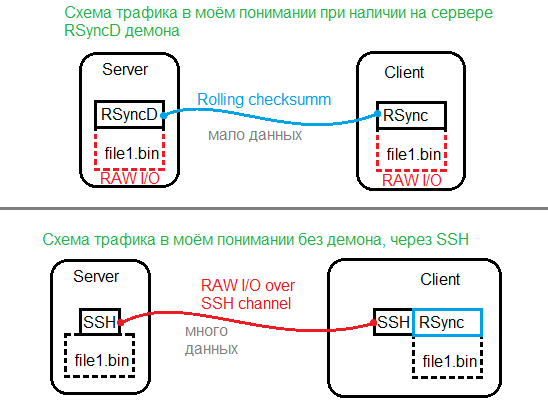Answer the question
In order to leave comments, you need to log in
Is there a difference in the amount of rsync traffic when connecting via "rsyncd-rsync" or "rsync-ssh" and why?
Here's what I don't understand:
What's the point of running rsync without a daemon on the server side, via ssh?
After all, this loses the advantage of copying only the changed parts of
the file. I think so because, in order to compare two files,
you need to read them completely and compare the checksums of the blocks.
With the daemon, the server part reads on the server and exchanges only
the checksum, the client part does the same, and via SSH
the client reads the entire file from the server over the network.
In general, I am mistaken somewhere, I can not understand where. Help me figure it out please.
Here is a drawing where I graphically outlined my thoughts.
Answer the question
In order to leave comments, you need to log in
From the point of view of the mechanism of operation of rsync, there is no difference. On the second server side, the rsync process is launched, which does everything the same as rsyncd.
ssh in this case provides encryption of all traffic, authorization and other goodies. Including traffic compression, if it is enabled (well, if traffic is actually reaped at all).
So there will be less traffic, the load on the percentage will be higher. In terms of possibilities - everything is the same.
Rsyncd is convenient when you do not want to authorize machines via ssh (which merge backups, for example). But then files can be stolen along the way -=)
Didn't find what you were looking for?
Ask your questionAsk a Question
731 491 924 answers to any question